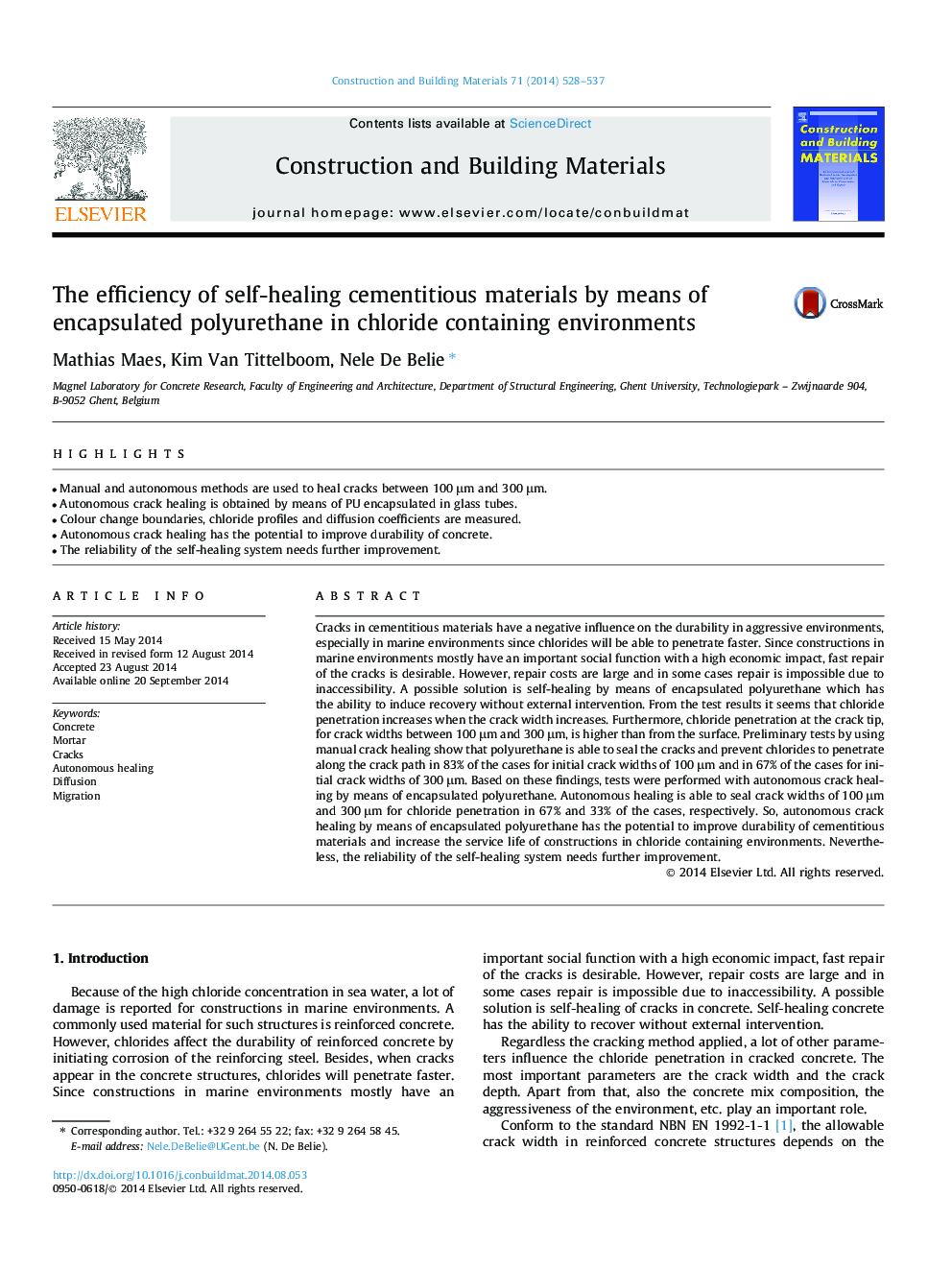| کد مقاله | کد نشریه | سال انتشار | مقاله انگلیسی | نسخه تمام متن |
|---|---|---|---|---|
| 257314 | 503584 | 2014 | 10 صفحه PDF | دانلود رایگان |
• Manual and autonomous methods are used to heal cracks between 100 μm and 300 μm.
• Autonomous crack healing is obtained by means of PU encapsulated in glass tubes.
• Colour change boundaries, chloride profiles and diffusion coefficients are measured.
• Autonomous crack healing has the potential to improve durability of concrete.
• The reliability of the self-healing system needs further improvement.
Cracks in cementitious materials have a negative influence on the durability in aggressive environments, especially in marine environments since chlorides will be able to penetrate faster. Since constructions in marine environments mostly have an important social function with a high economic impact, fast repair of the cracks is desirable. However, repair costs are large and in some cases repair is impossible due to inaccessibility. A possible solution is self-healing by means of encapsulated polyurethane which has the ability to induce recovery without external intervention. From the test results it seems that chloride penetration increases when the crack width increases. Furthermore, chloride penetration at the crack tip, for crack widths between 100 μm and 300 μm, is higher than from the surface. Preliminary tests by using manual crack healing show that polyurethane is able to seal the cracks and prevent chlorides to penetrate along the crack path in 83% of the cases for initial crack widths of 100 μm and in 67% of the cases for initial crack widths of 300 μm. Based on these findings, tests were performed with autonomous crack healing by means of encapsulated polyurethane. Autonomous healing is able to seal crack widths of 100 μm and 300 μm for chloride penetration in 67% and 33% of the cases, respectively. So, autonomous crack healing by means of encapsulated polyurethane has the potential to improve durability of cementitious materials and increase the service life of constructions in chloride containing environments. Nevertheless, the reliability of the self-healing system needs further improvement.
Journal: Construction and Building Materials - Volume 71, 30 November 2014, Pages 528–537
